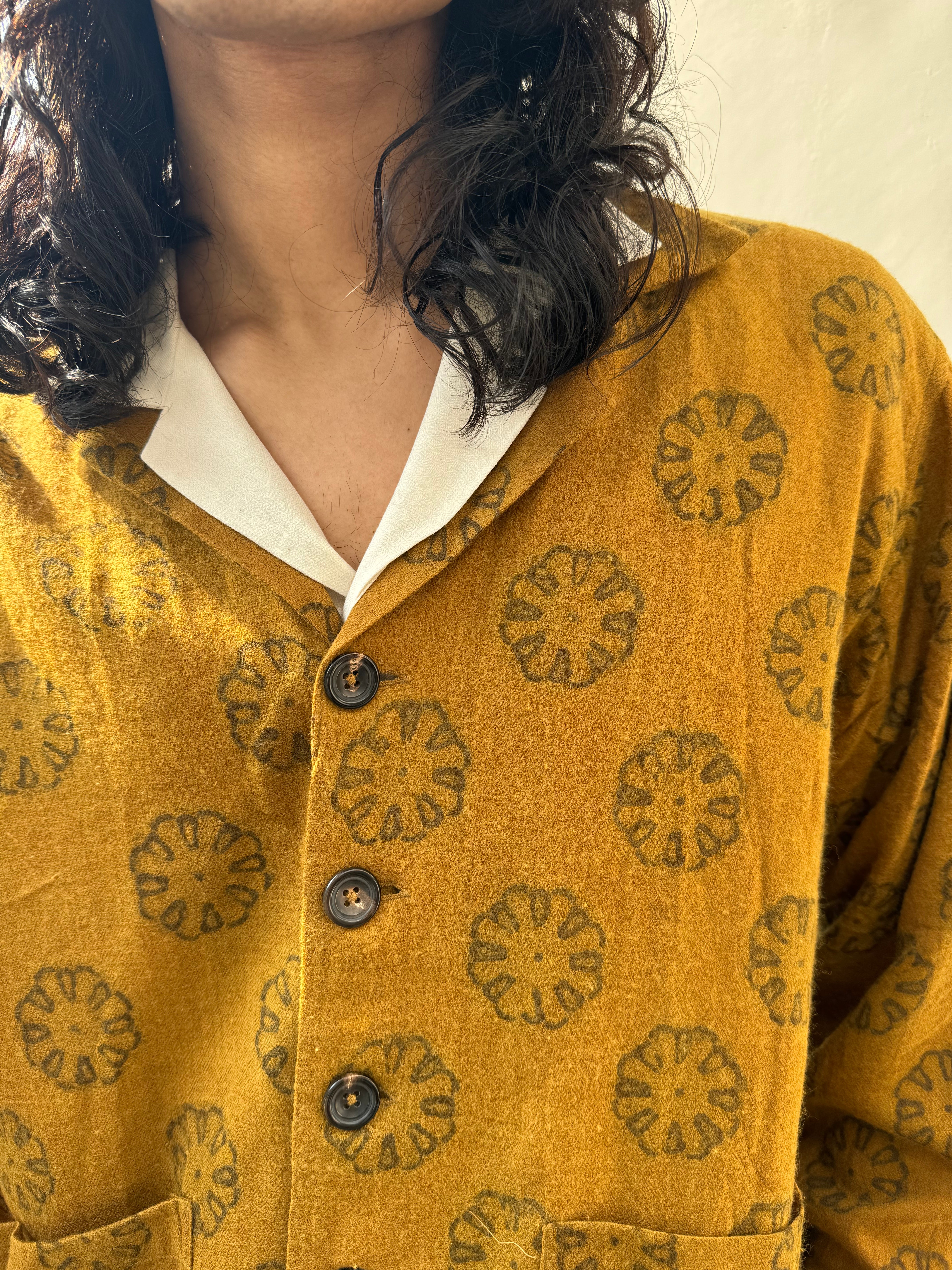2. BLOCK PRINTING
Hand block printing in India is a centuries-old craft celebrated for its intricate designs, vibrant colors, and cultural significance. Ajrakh printing, originating from the Kutch region of Gujarat, and Bagru printing, hailing from Rajasthan, are two prominent styles that showcase the diversity and beauty of Indian block printing. These techniques involve intricate hand-carved wooden blocks, natural dyes, and skilled artisans who meticulously print elaborate designs onto fabric, creating stunning textiles prized for their craftsmanship and heritage.
Ajrakh printing is a labor-intensive process that has been practiced for generations by the Khatri community in Gujarat. The technique involves multiple stages of printing and dyeing, with artisans using intricately carved wooden blocks to imprint geometric and floral motifs onto fabric. Natural dyes derived from plants, minerals, and even insects are then meticulously applied, layer by layer, to achieve the characteristic rich colors and patterns of Ajrakh textiles. The fabric is then washed, dried, and sometimes treated with special ingredients like camel dung to enhance the colors and set the dyes, resulting in exquisite pieces cherished for their beauty and cultural significance.
Bagru printing, on the other hand, originates from the village of Bagru in Rajasthan and is known for its earthy tones and bold designs. Artisans in Bagru use hand-carved wooden blocks to print intricate patterns onto cotton or silk fabric. Natural dyes made from ingredients like indigo, turmeric, and pomegranate are then applied to the fabric, creating a harmonious blend of colors and motifs. The printing process often involves precise alignment and overlapping of blocks to create complex designs, showcasing the skill and artistry of the craftsmen. Bagru printing not only produces beautiful textiles but also sustains traditional livelihoods and fosters community pride, making it an integral part of India's rich cultural heritage.





